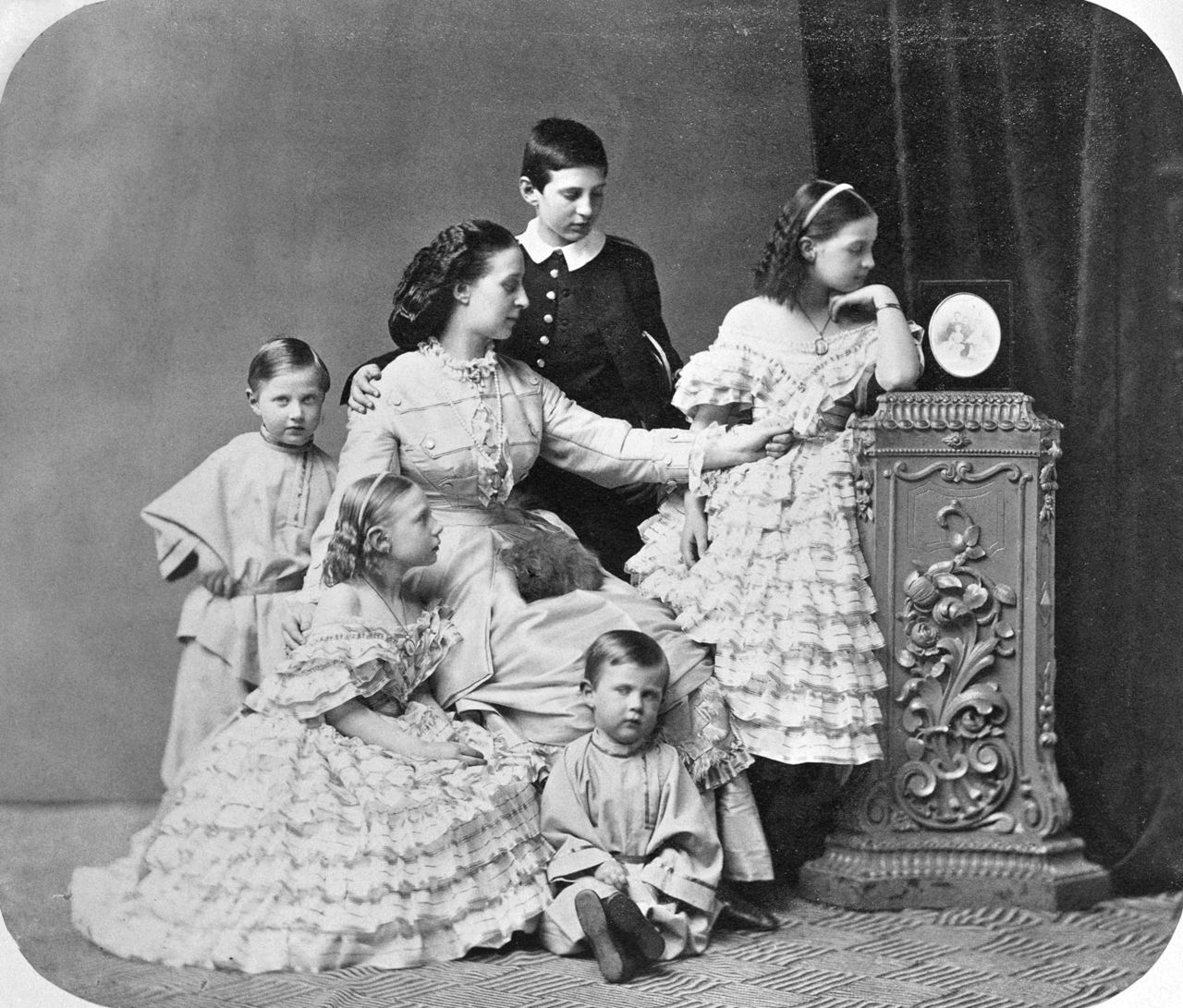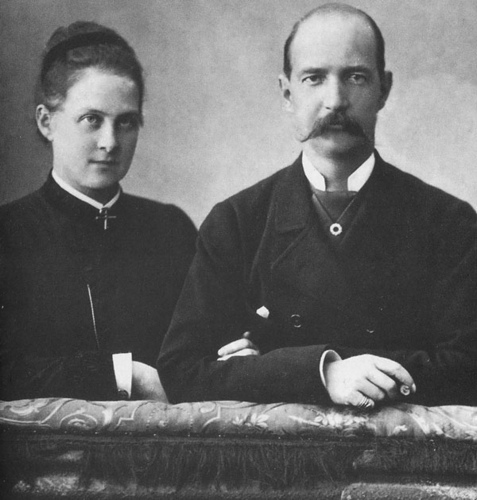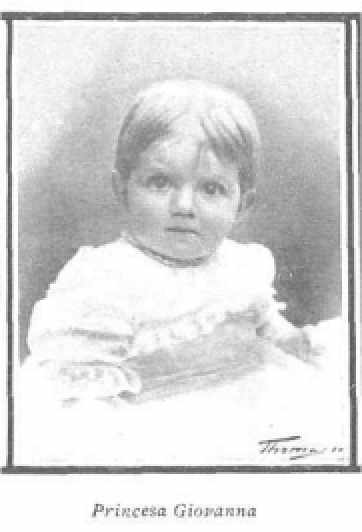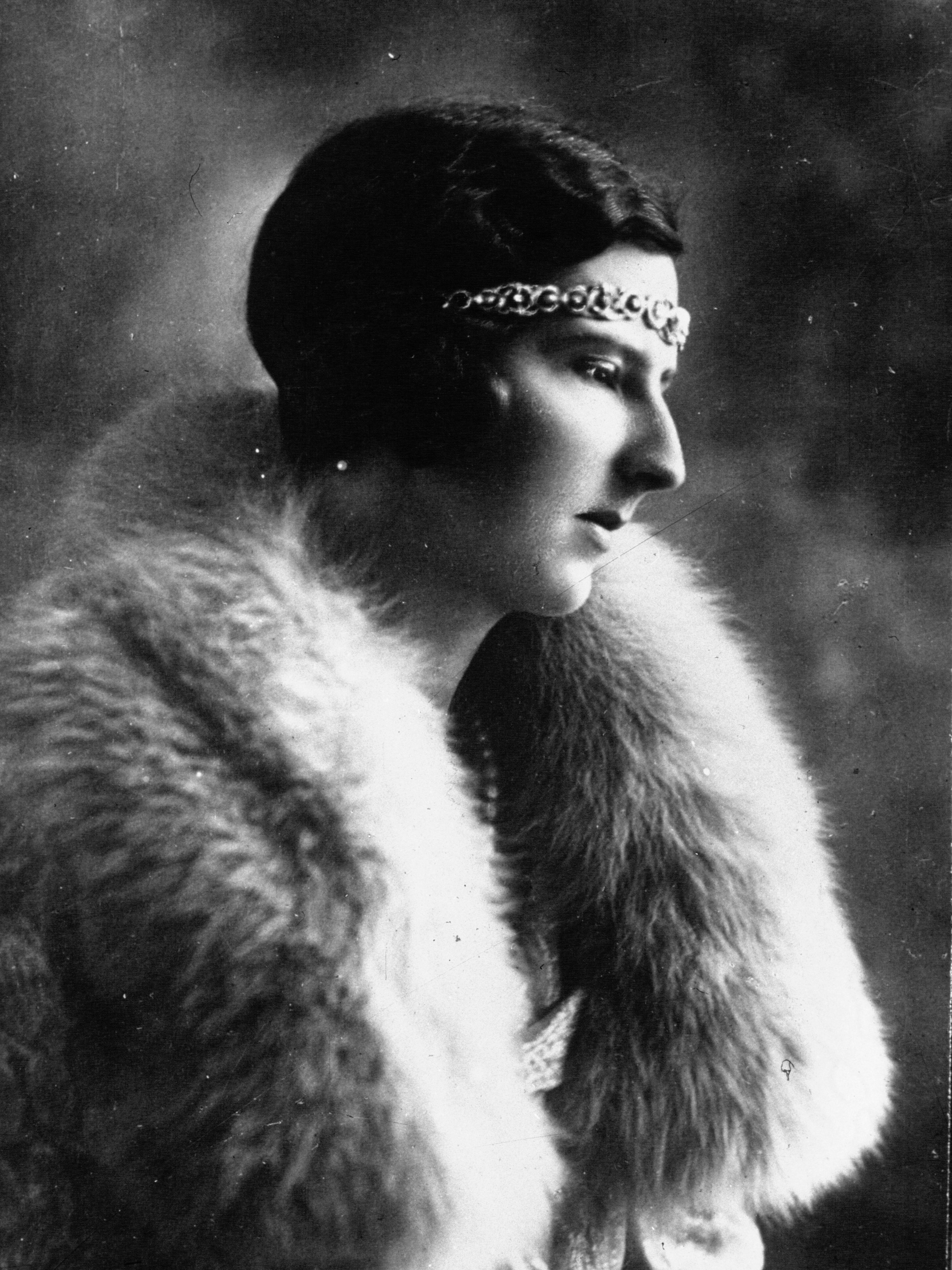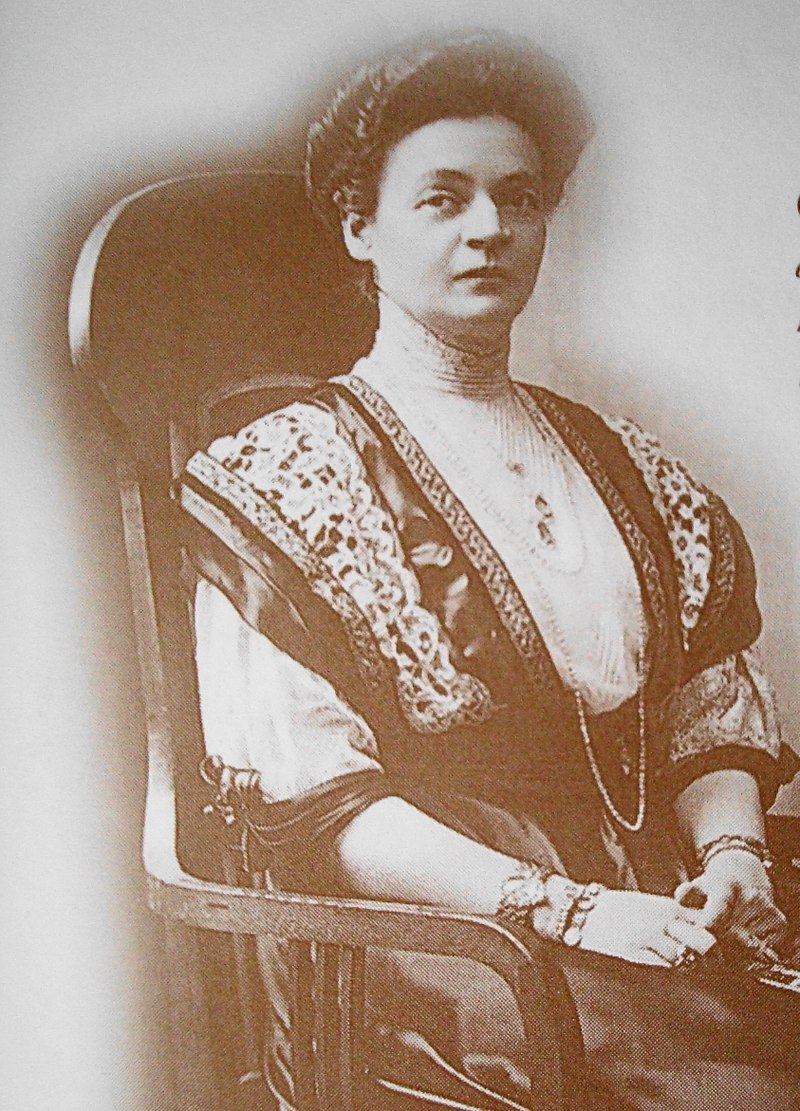by Scott Mehl © Unofficial Royalty 2016

King George II of Greece. source: Wikipedia
King George II of the Hellenes was the eldest son of King Constantine I and Princess Sophie of Prussia. He was born on July 19, 1890, at Tatoi Palace near Athens, Greece, and had five younger siblings:
- King Alexander of the Hellenes (1893 – 1920), married Aspasia Manos, had one daughter born five months after Alexander’s death
- Princess Helen of Greece, Queen Mother of Romania (1896 – 1982), married King Carol II of Romania, had one son, divorced
- King Paul I of the Hellenes (1901 – 1964), married Princess Frederica of Hanover, had two daughters and one son
- Princess Irene of Greece, Duchess of Aosta (1904 – 1974), married Prince Aimone, Duke of Aosta, had one son
- Princess Katherine of Greece, The Lady Katherine Brandram (1913 – 2007), married Major Richard Brandram, had one son
At the time of his birth, George’s grandfather, King George I, was King of the Hellenes, and his father was Crown Prince. Through his mother, George was a grandson of Friedrich III, German Emperor and Victoria, Princess Royal, Queen Victoria’s eldest child.

Queen Sophia and King Constantine I with their five eldest children (l-r): Paul, Alexander, George, Helen, and Irene. c1911. source: Wikipedia
As a child, George and his family lived in a villa in Athens and enjoyed time at Tatoi Palace. The family also often traveled to England and spent part of their summers at Friedrichshof, George’s maternal grandmother’s home in Germany, as well as Corfu and Venice. His education was primarily military-based, attending the Hellenic Military Academy in Athens. At the age of 18, George continued his military training with the 1st Infantry Regiment of the Prussian Guard in Berlin, where he stayed for several years. He returned to Greece in October 1912 and fought with the 1st Greek Infantry during the Balkan Wars. All would change on March 18, 1913, when his grandfather was assassinated, and his father ascended to the Greek throne. George became Crown Prince and Duke of Sparta, the traditional title for the heir to the Greek throne, although rarely used within Greece.
In June 1917, George’s father was forced to relinquish the throne. While George was the Crown Prince and rightful heir, the government felt he was too ‘German’, having trained with the Prussian Guard, and because of his mother’s German roots. Instead, his younger brother Alexander was placed on the throne. George went into exile in Switzerland with his father and most of his family. King Alexander died on October 25, 1920, having contracted septicemia following a monkey bite, and soon after, King Constantine I was returned to the throne. George returned to Greece and served in the Greek forces during the Greco-Turkish War.
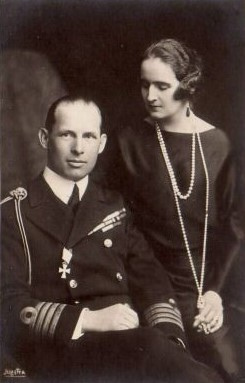
George and Elisabetha, 1921. source: Wikipedia
George married his second cousin Princess Elisabeta of Romania on February 27, 1921, in Bucharest, Romania. She was the daughter of King Ferdinand I of Romania and Princess Marie of Edinburgh, a granddaughter of Queen Victoria. The couple became engaged in October 1920, after having known each other for many years. Coincidentally, at the formal engagement festivities, George’s sister Helen began her relationship with Elisabeta’s brother, Crown Prince Carol of Romania. The two became engaged the following month and married in Athens just two weeks after George and Elisabeta’s wedding. George and Elisabeta had no children, and would eventually divorce in 1935.
Following Greece’s loss in the Greco-Turkish War, an uprising of Greek military officers, known as the 11 September 1922 Revolution, took control of the government. The new military regime forced King Constantine I to abdicate, and George ascended to the throne on September 27, 1922, as King George II. Like his brother Alexander, George was a puppet king for the Revolutionary Committee and lived in constant fear.
On October 18, 1923, the Revolutionary government announced that elections would be held in mid-December to elect a National Assembly that would determine Greece’s future form of government. Just days later, a group of pro-royalist military officers attempted to stage a coup but were quickly defeated. Although not responsible for the coup, King George II was blamed for it, and there were public calls to abolish the monarchy.
Following the elections in December, George was asked to leave the country while the new government decided Greece’s fate. Under the guise of an official visit to his wife’s home country of Romania, George left Greece on December 19, 1923, with his wife and younger brother Paul. They lived for a few weeks in a wing of Cotroceni Palace, before taking a small villa in Bucharest. On March 25, 1924, Greece declared itself a Republic, and the monarchy was abolished. King George was stripped of his Greek citizenship, and all of his assets in the country were confiscated.

King George and Queen Elisabetha (on right) with the Romanian royal family, late 1920s, source: Wikipedia
George quickly grew disenchanted with his life at the Romanian court but found great comfort in the help and support of his mother-in-law Queen Marie who he wrote “was the only one to make life bearable” at the time. He soon began to travel, spending about half the year between visiting his mother in Florence and friends in London. In 1932, he moved permanently to London, taking a small suite of rooms at Brown’s Hotel in Mayfair. He was careful to avoid saying or doing anything that could be considered political, stating simply that he considered himself to be one of the Greek people, and should the country choose to bring him back to the throne, he would abide by their wishes.
George was close to the British royal family, and in 1934, attended the wedding of his cousin Princess Marina of Greece to Prince George, Duke of Kent. By this time, his marriage to Elisabetha had deteriorated, and she had undertaken several affairs. George, too, had begun an affair. In early 1935, he met Joyce Wallach, the wife of an aide to the Governor of India. Married with a young daughter, she soon divorced her husband, and the two enjoyed a very private relationship for the rest of George’s life. After returning to London, George was surprised to find out he was no longer married. Elisabetha had been granted a divorce in Bucharest, citing desertion as the grounds for divorce. In reality, she had already vowed not to return to Greece, and there was growing sentiment to restore the monarchy. The marriage was dissolved on July 6, 1935.
Embed from Getty Images
George with his cousin Princess Marina, Duchess of Kent in 1946
Elisabeta was right. On November 3, 1935, a referendum resulted in an overwhelming majority supporting the restoration of the Greek monarchy. George and his brother Paul began making arrangements to return to Athens. After visits to France and Italy, they arrived in Greece on November 25, 1935. Although met with significant support, George found his country broken and needing reform. More changes in the government’s leadership led to the dissolution of the Hellenic Assembly and new elections to be held in January 1936. By April of that year, Ioannis Metaxas had become Prime Minister.
The further unrest led to a general strike planned for August 5, 1936. The day before the strike, Metaxas advised King George to dissolve the Assembly without calling for new elections, and to suspend parts of the constitution, basically allowing for a dictatorship. Facing increased political turmoil and the growing rise of communism, King George agreed and allowed for what became known as the 4th of August Regime under Prime Minister Metaxas. Once again, King George became a puppet king, but this time at least he had the support and respect of his Prime Minister.
Having little power and no formal role, King George began restoring the Royal Palace in Athens, which had been looted and left in disrepair. With no money provided, George undertook the project and the costs himself. Another project George undertook was to bring home the remains of his relatives buried elsewhere. In November 1936, George and his brother Paul traveled to Florence to retrieve the remains of their parents and grandmother Queen Olga. They were brought back to Greece and interred at the Royal Cemetery at Tatoi Palace. Four years later, he arranged for the remains of his aunt Grand Duchess Alexandra Georgievna of Russia to be returned to Greece, fulfilling a promise he had made to his grandmother many years before.
In April 1941, following the German occupation of Greece, King George and the government went into exile. The Greek Royal Family was evacuated to Egypt, but soon needed to find another place to live. George and his brother Paul moved to London, while Paul’s wife and children went to South Africa for the remainder of the war. The British government was not willing to allow Prince Paul’s wife, born Princess Frederica of Hanover, into the country. Paul eventually settled in Cairo, Egypt, where his government-in-exile had settled in 1943.
Despite George’s promise that following liberation he would restore the 1911 Constitution and hold elections within six months, many in Greece did not trust him and fought against his return. With the establishment of a rival Communist-led government, it was decided that a referendum would be held to determine the fate of the Greek monarchy. King George was forced to appoint the Archbishop of Athens as Regent. The archbishop quickly appointed a new government that was very anti-monarchy. George, frustrated and tired, leased a house in London, expecting to live the rest of his life in exile with his mistress. However, the following year, on September 1, 1946, a referendum was finally held, and the majority supported the return of the King. Several weeks later, King George II returned to a country rife with political uncertainty and facing economic collapse.

Tomb of King George II at Tatoi. source: Wikipedia, photo by krischnig
George’s return would be short-lived. His health declining, King George II of the Hellenes was found unconscious in his office at the Royal Palace in Athens, Greece, on April 1, 1947. Several hours later, it was announced that he had died of arteriosclerosis. Following a state funeral at the Metropolitan Cathedral of Athens, he was buried at the Royal Cemetery at Tatoi.
Greece Resources at Unofficial Royalty
- Kingdom of Greece Index
- Greek Royal Burial Sites
- Greek Royal Dates
- Greek Royal Weddings
- Kings of Greece
- Profiles: Greek Kings and Consorts
This article is the intellectual property of Unofficial Royalty and is NOT TO BE COPIED, EDITED, OR POSTED IN ANY FORM ON ANOTHER WEBSITE under any circumstances. It is permissible to use a link that directs to Unofficial Royalty.


